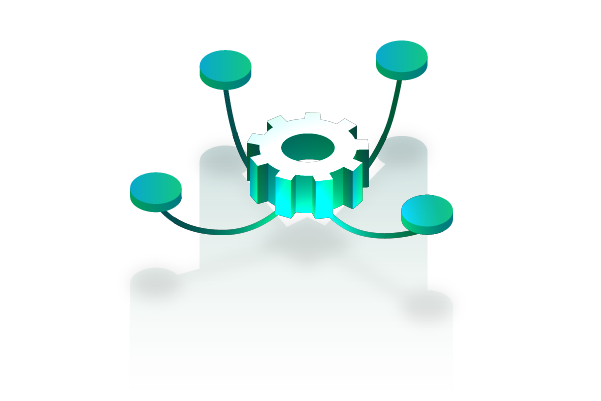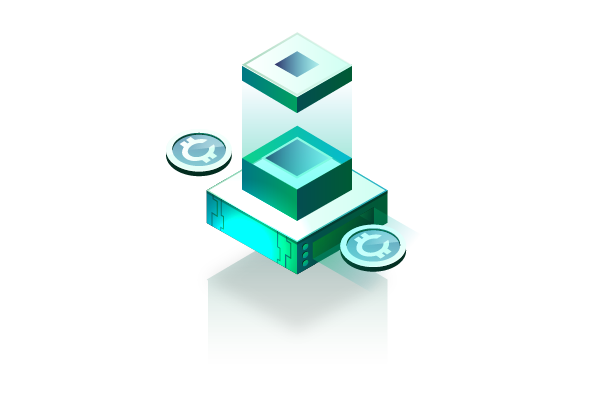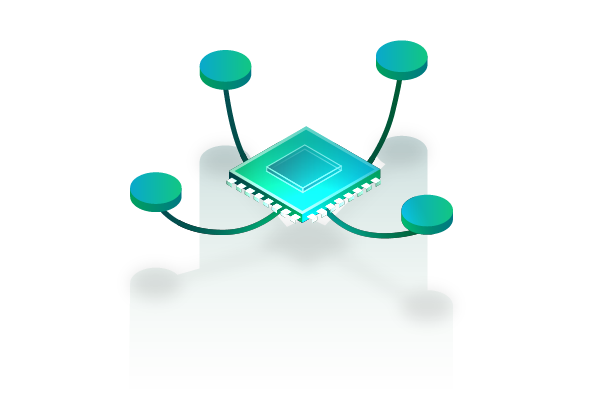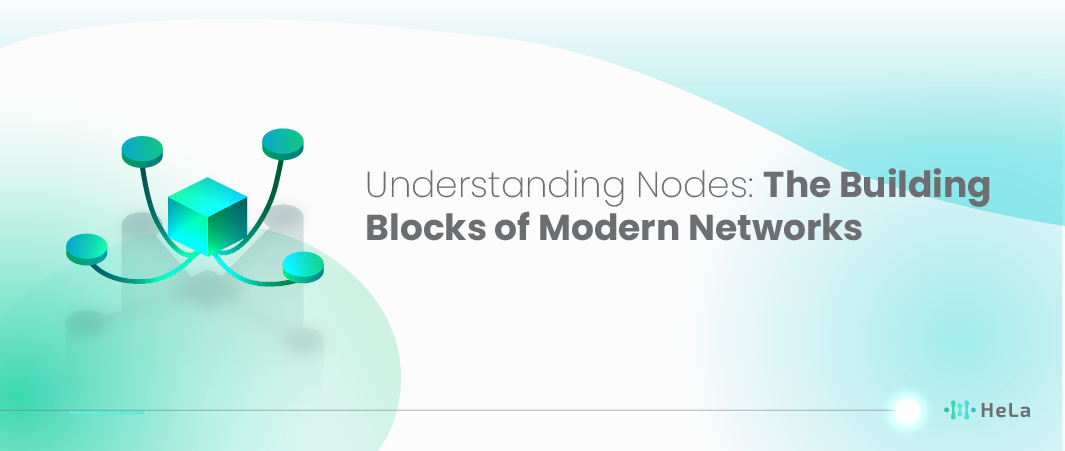Nodes as integral components of current technologies are elements that make up various systems and serve as the basis of their interaction. In simple terms, a node refers to a junction or an intersection in a network be it a computer network, data structures or the interconnect IOT entities. In this context, the complexity of nodes is reflected in the variety of forms and tasks that they perform, which are essential for the proper functioning and management of modern technological environments.
In computer networks, nodes can cover a wide range of objects, including computers, servers, routers, switches, and other devices. Every node is an independent component that can transmit, receive, or even process information within the network. By relaying data packets, nodes help in communication, transmitting and sharing of data across large geographical areas necessary in the current digital age interactions like browsing, gaming and streaming. Read more about it below.
What is Nodes?

In relation to blockchain technology, nodes can be defined as essential building blocks of an entire architecture and serve a critical purpose of upholding the decentralized, secure, and transparent network environment. They are computer devices that are actively involved in the transactions, storage as well as the administration of the information within the block chain. To recap, there are various types of nodes with distinct operational roles as part of the given network.
There are different types of nodes as well, but let’s talk about some of the most well-known, starting with Full nodes that, for example, include the entire history of the blockchain, from the very first block, known as the genesis block, up to the current block and more, while also being engaged in the validation of transactions and blocks, as well as their relaying, based on the given consensus rules. This makes sure that every transaction of a particular entity follows a certain protocol, which aids in making the financial ledger as efficient and as accurate as possible.
While, lightweight nodes, or SPV nodes in the new terminology do not contain the whole blockchain but only have a limited part of the blockchain most often block headers. These are in great dependence of full nodes for the information that provides an account of transactions in order to verify them, less so in terms of storage and computational power. Thus, such computers remain useful in the network because they are involved in handling transactions and distributing data of the blockchain.
Nodes can also be specifically assigned certain tasks due to the requirements of the consensus algorithm applied in the specified blockchain. For instance, in a Proof of Work (PoW) system, only certain parties such as miners try to solve complex computational puzzles to append new blocks to the blockchain, apart from reinforcing the security of the network to make it harder for the attacker to double spend a cryptocurrency or reverse prior transactions. In PoS systems, nodes that are chosen to propose and validate new blocks are selected based on the amount of the cryptocurrency they own and the amount of that cryptocurrency they wish to “commit” as a guarantee.
Apart from these functions, the primary use of nodes is to ensure decentralization of the blockchain. Since each node is autonomous, and nodes can directly share data with other nodes, there is no upper authority that has to monitor or control the network. This prevents the blockchain from being censored and also makes it difficult for the network to have a single vulnerable node.
In addition, nodes help make the blockchain more transparent and decentralized or trustless. Every transaction is stored on the ledger and has been checked by every node, so that all participants can be guaranteed that the data is accurate and they don’t have to trust a particular party. It is this openness that makes the blockchain platform to encourage trust among participants especially where trust in central authorities is lacking.
Functions of Nodes

Nodes in a blockchain network are the key servers of the decentralized structure that perform various vital activities to the functioning and security of a blockchain network. One of the major responsibilities that come with nodes is the verification and dissemination of transactions. Whenever a transaction is commenced on a blockchain, it has to go through nodes in order to check whether the transaction complies with the consensus rules of the network. Such rules are typically handy when assessing issues such as digital signatures, double spending, or adherence to protocol specifications. The transaction is then broadcasted across the network to waiting nodes, so the nodes can validate it further and include it in the next block.
Also, nodes have the critical responsibility of endorsing the distributed ledger of the blockchain structure. Every node in the network therefore maintains a copy of the blockchain which is a record of all transactions that can be done in the network. This redundancy makes it so that even if some nodes are malicious or even fail the integrity and availability of the blockchain are preserved. Moreover, nodes hold copies of the blockchain and ensure that there is no single or central authority that can be tampered with or attacked to bring down the network since it is decentralized.
Also Read: Blockchain Operating System: The Key to Transparent Transactions
Besides carrying out transaction validation and ledger management activities, nodes also contribute to consensus in the blockchain. For instance, the PoW or PoS consensus models require nodes to reach an agreement on the status of the blockchain without involving a central figure. In PoW based block chain like Bitcoin, different nodes struggle to solve intricate calculations to authenticate transactions and generate new blocks whereas in PoS based block chain, different nodes try to authenticate transactions according to their amount of stake in the network.
In addition, nodes are capable of running smart contracts and decentralized applications (DApps) in specific blockchain platforms such as Ethereum. It is self-enforcing digital contracts that are coded with the conditions of the contract to be performed. Smart contracts run at the nodes to guarantee the proper performance of these contracts and provide trustless and automated P2P transactions. On the other hand, DApps are decentralized applications running on blockchain that encompasses a wide area of the economy starting with finances and ending with games. Nodes also contain the computational capabilities needed to run these applications so that they can function throughout the network.
Top 7 Different Types of Blockchain Nodes

Transaction nodes gained a great deal of responsibility for the blockchain network’s stability, safety, and decentralization. These nodes may also differ in their roles, resource demands, and services offered to various components of the system. Here’s a comprehensive overview of the different types of nodes found in blockchain networks:
1. Full Nodes
There should be full nodes for the decentralization and security of the blockchains. Validators contain an exact copy of the blockchain ledger and run a set of checks through which they verify each transaction and block against the rules of consensus.
Their characteristic are various. First, Complete Ledger, they contain information of all the transactions that began from the block that marks the start of the chain, through the current block. Verification, they confirm the results of all financial transactions and blocks to ensure they are compliant with the protocol rules, such as proper signatures and no instances of double spending. Network Support, they carry valid transactions and blocks to other nodes and are thus essential for the general well-being of the network. Resource Intensive, full nodes can be resource intensive to operate since they must store large amounts of data, compute resources and communications.
Example of this is including Bitcoin Core that are the version which should correspond to the official protocol requirements when speaking about Bitcoin implementation. Geth, ethereum client software referred to as go-ethereum or geth that allows many ethereum full nodes.
2. Light Nodes (SPV Nodes)
Light nodes, also known as Simplified Payment Verification (SPV) nodes, offer another level of efficiency in the interaction with the given blockchain as such nodes do not download full blocks and instead work with their headers.
Partial Ledger, they store only the block headers and greatly diminish the storage space required since it only contains some kind of ID of the block. Efficient Verification, it ensures transactions hence asking for proofs(proofs of proofs/Merkle paths) from the full nodes it uses. Dependence on Full Nodes, they depend on full nodes for the details that are required to validate the transaction. Lower Resource Needs, advantaged for use on mobile devices and visualization of applications where there is restricted memory and processing capability.
Bitcoin SPV Wallets are Lightweight Bitcoin Clients like Electrum, wallets that employ the principle of SPV to give users a detailed view of the Bitcoin network.
3. Mining Nodes
Specially, mining nodes are some of the full nodes that participate in the creation of a new block. They engage in consensus-solving activities like Proof of work (PoW) or Proof of Stake (PoS) to mine blocks in the blockchain.
Block Creation in PoW, they mine for new blocks through solving the difficult hash problems, in PoS they validate blocks based on the ‘stake’ coins invested. Rewards benefits for miners include block rewards together with transaction fees. High Resource Demand PoW mining is a very compute and energy intensive process whereas PoS mining demands large amounts of cryptocurrency.
Bitcoin Miners are the nodes striving to get an opportunity to solve SHA-256 puzzles. Ethereum Validators anyone locking up Ether as a proposer and sealer of blocks under Ethereum 2. 0’s PoS.
4. Masternodes
Masternodes are basically fully validating nodes which also offer extra services for the blockchain network other than the usual validation of transactions and the spread of blocks. These nodes are often expected to make collateral deposits and receive payment for their services.
Collateral Requirement, to become an operator, they have to secure a significant amount of funds in the form of cryptocurrencies. Special Services, some of the provided services include, transaction mixing for privacy, instant transactions, and governance voting. Incentives, masternodes receive a numerous of the block rewards and also some percentage of the transaction fees.
Dash Masternodes extend the use of PrivateSend (transaction blending) and InstantSend (faster transaction processing). PIVX Masternodes offer similar privacy and on-demand payment functions.
5. Authority Nodes (Validator Nodes)
The authority nodes are applied in permissioned block chain systems where their chief duty is to approve transactions and generate new blocks. They employ consensus algorithms like Practical Byzantine Fault Tolerance (PBFT), or Proof of Authority (PoA).
Trusted Entities, these nodes include recognizable, reputable operating organizations. Control and Trust, they have more control over the network, and the fact that their identities are attached to their posts gives more credibility. High Performance, that is common in enterprise and consortium blockchains where speed and compliance issues are important.
Hyperledger Fabric for an enterprise solution in a permissioned network, it employs authority nodes. Quorum is a private blockchain using Ethereum as its platform and PoA as its consensus mechanism.
6. Archive Nodes
While they are similar to full nodes due to the fact that they store all blocks found within the blockchain, archive nodes also store all of them in between stages of the blockchain and previous blocks as well. Such nodes are essential in specific uses, where history databases and general audits are necessary.
Also Read: Privacy Protection in Blockchain: How to Safeguard Your Digital Assets
Complete Data Storage preserves each historical state and block of the blockchain referred to in the previous section. Data Access is the select statement that is useful for querying to involve historical transactions, states, and auditing. Resource Intensive has strict requirements for storage balance to ensure that extensive history of blockchain can be retrieved.
Ethereum Archive Nodes is HTTPS Store the complete state of cryptographic ledger Ethereum blockchain used in explorers and analysis.
7. Listening Nodes
Relay nodes or listening nodes are special nodes that can be connected to by other nodes for the purpose of enhancing inter-connectivity or other purposes, allowing for the exchange of data in the network.
High Connectivity ensures members create a large number of peer messages for passing information to other members. Network Health is the following improvements are proposed: increase the distribution of transactions and blocks between the nodes in the network. Bandwidth Demand needs to provide considerable data transfer rates to support a large amount of communication sessions.
Bitcoin Relay Network a second layer of nodes to receive the transactions and/or blocks and distribute them within the dedicated network.
The Importance of Nodes in Modern Technology

Nodes are an essential part of contemporary technologies and are used as connection points within numerous networks. In computing and telecommunications, a node is any active device that can originate, terminate, or forward a message. These are computers, smart phones, servers, routers and switches through which interconnects the internet and other related networks. In the context of the Internet of Things (IoT), nodes can be sensors, electrical appliances or other smart objects which gather, analyze and transfer data, to create smart homes, smart cities and intelligent automation systems. These nodes operate in concert to observe conditions, adjust power consumption and enhance productivity and protection.
Nodes are also crucial in blockchain systems, which serve the purpose of verifying and en Registering transactions in the decentralized systems. Every participant keeps a copy of the blockchain, which prevents fraud and hacking and increases the level of transparency. They make use of this decentralized strategy across numerous applications ranging from cryptocurrencies to supply chain among others.
In distributed computing, nodes also increase processing and resource capabilities to improve performance, capacity, and availability. These nodes can be individual computing devices in a cloud computing setup, or elements in an HPC cluster. Thanks to the distribution of workloads throughout the network, intricate calculations and vast data sets can be processed faster, which enables the development of science, finance, artificial intelligence, etc.
Connectivity of nodes helps in flow of data and messages, flow of instructions, and in performance of complex calculations which extend to the basic components of the present day communication networks. This set of nodes forms the foundation of the exponential growth of technologies within the multiple spheres of a society including healthcare, finance, entertainment and education. While technology advances to the next level, nodes will play an important role in developing efficient and secure networks which are essential for day to day innovations.
Conclusion
In the complex fabric of contemporary technoscape, nodes are established as elementary entities, knitting the textures of linking, computing and communicating. It is important to understand that their meaning is not contained in their strict technical definition, rather, they are the modern manifestation of the concepts of interdependence and utility that exist within digitized environments. In essence, a node may be described as a distinct component in a network that is vested with specific powers and or tasks that collectively make up larger systems. Regardless of whether it is Information Technology or Telecommunications or Distributed Computing, nodes act as the bricks by which advancements are made.
Nodes are a very important factor in modern technology. They act as the interfaces in the loosely coupled systems to facilitate the flow of information and also for coordinating the complex tasks in a coordinated and effective manner. Nodes can be considered as individual components of the internet that provide connectivity of different devices that would otherwise work independently in the absence of nodes. Likewise, distributed computing networks would be incompatible with the scale and robustness required to solve the computational demands of the digital age. As such, nodes are an important cog in the machinery of technological advancement and a force that defines technology in the contemporary world.
Disclaimer: The information provided by HeLa Labs in this article is intended for general informational purposes and does not reflect the company’s opinion. It is not intended as investment advice or a recommendation. Readers are strongly advised to conduct their own thorough research and consult with a qualified financial advisor before making any financial decisions.

